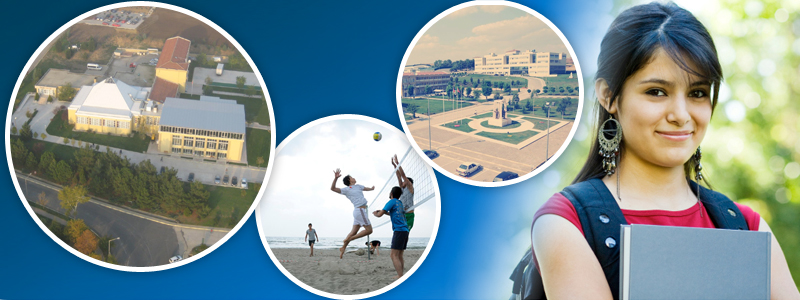









| Academic Unit Presenting the Program | Public Finance | |||||||||||||||||||||||||||||||||||||||||||||||||||||||||||||||
| Program Director | Assoc. Prof. Simla GÜZEL | |||||||||||||||||||||||||||||||||||||||||||||||||||||||||||||||
| Program Type | Bachelor's Degree Program | |||||||||||||||||||||||||||||||||||||||||||||||||||||||||||||||
| Level of Degree Earned | Undergraduate (Bachelor’s Degree) | |||||||||||||||||||||||||||||||||||||||||||||||||||||||||||||||
| Degree Earned | Upon successful completion of the Public Finance programme, students will be awarded with a Bachelor´s Degree in Public Finance with the title of " Public Finance Graduate". | |||||||||||||||||||||||||||||||||||||||||||||||||||||||||||||||
| Education Type | Tam zamanlı | |||||||||||||||||||||||||||||||||||||||||||||||||||||||||||||||
| Registration Acceptance Conditions | Those who have successfully completed their secondary education are eligible. | |||||||||||||||||||||||||||||||||||||||||||||||||||||||||||||||
| Recognition of Prior Learning | ||||||||||||||||||||||||||||||||||||||||||||||||||||||||||||||||
| Degree Requirements and Rules | The students studying in this undergraduate program are required to have a Cumulative Grade Points Average (Cum.GPA) of not less than 2.00/4.00 and have completed all the courses with at least a letter grade of DD/S in the program in order to graduate. The minimum number of ECTS credits required for graduation is 240. It is also mandatory for the students to complete their compulsory internship in a specified duration and quality. | |||||||||||||||||||||||||||||||||||||||||||||||||||||||||||||||
| Program Profile | Our department aims to prepare students for a complex and competitive business environment and to train students who will develop necessary solutions to financial problems in the public and private sectors using scientific methods. Our program operates to meet the need for a knowledgeable and expert workforce in financial matters for both the public and private sectors. Our department strives to provide an education that integrates theoretical and practical knowledge by trying to adapt to the requirements of the world’s developments in the field of public finance. | |||||||||||||||||||||||||||||||||||||||||||||||||||||||||||||||
| Occupational Profiles of Graduates | The courses given in our department are mainly focused on finance, tax and budget systems, economics, statistics, and law. There is a wide range of job opportunities in the public and private sectors for students who will graduate from the Public Finance department. Graduates of the Department of Public Finance can be employed as inspectors, auditors, financial specialists, and accountants in public or private institutions. | |||||||||||||||||||||||||||||||||||||||||||||||||||||||||||||||
| Access To Upper Degree | Upon successful completion of their undergraduate programme of study, the students are encouraged to embark on advanced academic studies on the graduate level (master’s and doctoral) on the condition of having received the required score in the ALES exam and possessing sufficient knowledge of English or another foreign language. | |||||||||||||||||||||||||||||||||||||||||||||||||||||||||||||||
| Exams, Assessment and Grading | Students will take a minimum of one midterm examination. In addition to midterms, they will be assigned projects and homework whose deadlines will be specified at the beginning of the semester. At the end of each semester, the students are required to take a final examination. The course content, the requirements (midterm, project, assignment, and final examination), and their contribution to the final grade are specified on the website. Student regulations and the final examination dates are determined by the university and final examinations take place as announced. The students are graded according to their midterm, project, assignment, and final examination results. The passing grade at Tekirdağ Namık Kemal University is 60 out of 100. However, the grade of the final examination or the retake should be a minimum of 50. Exams are evaluated on a scale of 100. The final grade of a course is a total of %30 of the midterm grade and %70 of the final or the retake examination grades. However, the calculation of the final grade of a course can be determined and announced at the beginning of the semester by the Faculty/College Council as the total ranges between %30 – % to 50 of the midterm examination and %50 – % to 70 of the final examination as long as the addition equals to a scale of 100. As a result of the calculation, if the value after the decimal is less than five, the grade is finalized by lowering it to the decimal value; if more than five, upgrading it to the next decimal value. The regulations can be found at http://oidb.nku.edu.tr/yonetmenlik/2011eos.pdf. Final and retake grades are submitted to Student Affairs along with the evaluation criteria. The grades are announced on the student information system. The following letter grades/marks are given to students as every lesson’s semester end mark. Letter grades, coefficients, and proportions are as follows:
The students have to take again their DD, FD, or FF lessons at the next semester the lesson is opened. The students who finished their associate/undergraduate education and have a general grade average between 3.00 and 3.49 graduate as honor students, and then a grade average of 3.50 or higher grade students graduate as high honor students. | |||||||||||||||||||||||||||||||||||||||||||||||||||||||||||||||
| Graduation Requirements | ||||||||||||||||||||||||||||||||||||||||||||||||||||||||||||||||
| Teaching Methods | They are selected to boost the skills like teaching and learning methods and strategies, students’ self-studies, lifelong learning, observation, teaching other people, presenting, critical thinking, teamwork, and active utilization of informatics. In addition, special attention is paid to the education system to support students with different skills. The education and training methods used in the programme are shown in the following list.*
*One or more of the listed methods can be used according to the feature of the lesson.
| |||||||||||||||||||||||||||||||||||||||||||||||||||||||||||||||
Program Outcomes1-Being able to do the necessary research for the work and assignments related to the field. Gains the ability to solve the problems encountered, responsibility and awareness2-To be able to effectively convey the basic knowledge in the field of writing and verbally to the relevant people by using information technologies. 3-Have the knowledge to examine tax and budget policies in the world and Turkey. 4-They have the ability to present and develop their opinions on current financial issues and to produce solutions by interpreting events using existing data. 5-It provides the features sought in qualified personnel needed by the public and private sectors. For example, they will have knowledge of finance, law, economics, public administration, business, accounting and the ability to use them 6-Students gain hands-on experience in public finance through optional internships 7-Students develop the skills to communicate effectively on financial issues and to produce solutions to social and financial problems through community activities. 8-To be able to evaluate the information obtained in the learning process with cause-effect relationships; being able to predict what information will be needed where, when and why. 9-The ability to articulate and interpret social dynamics as both inputs and results to economic and financial processes is gained and is open to theoretical innovations in this field. 10-Gain the ability to monitor current changes in national and international economic markets and to make predictions about future fiscal policies based on these. | ||||||||||||||||||||||||||||||||||||||||||||||||||||||||||||||||
Curriculum | ||||||||||||||||||||||||||||||||||||||||||||||||||||||||||||||||